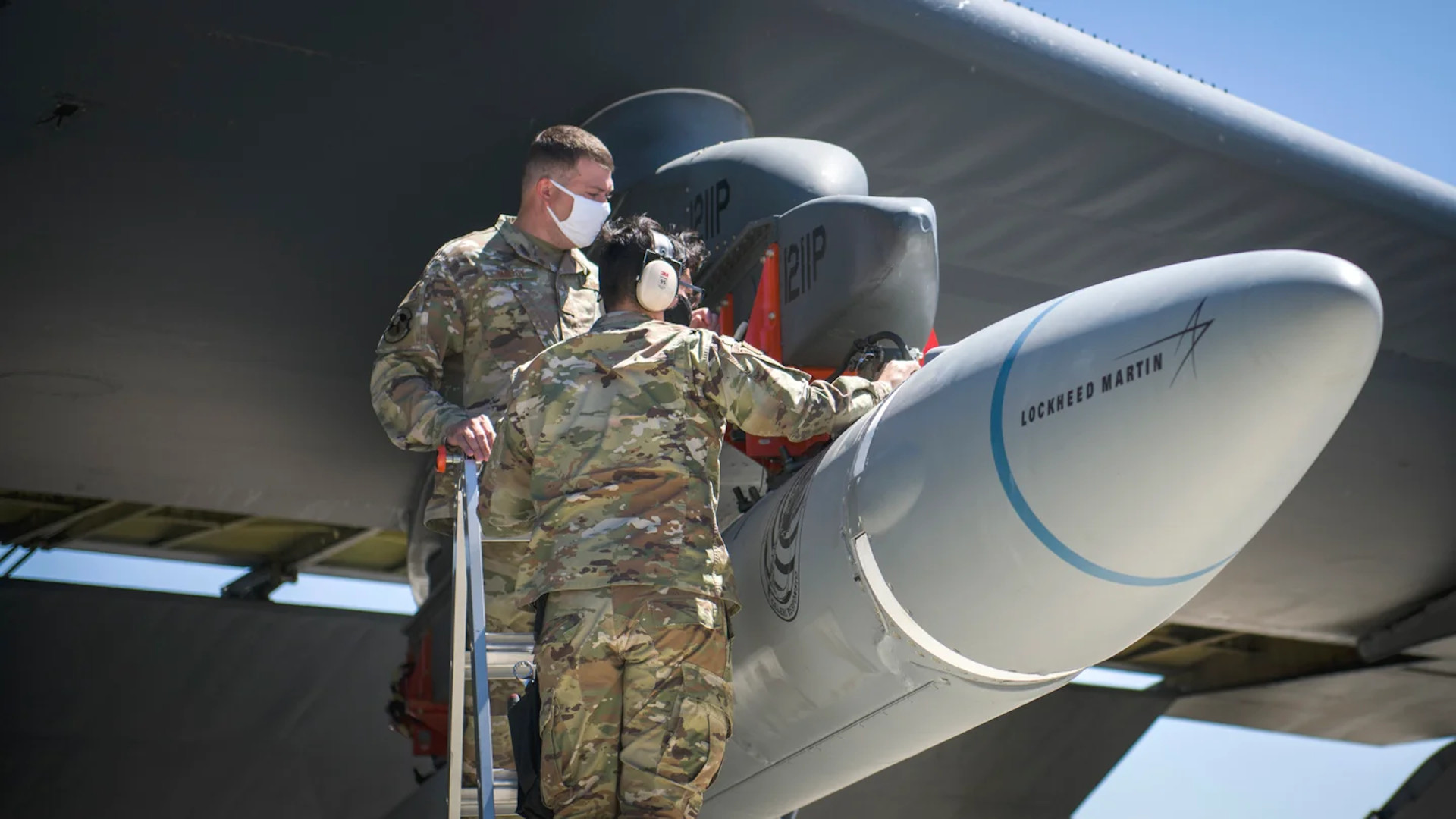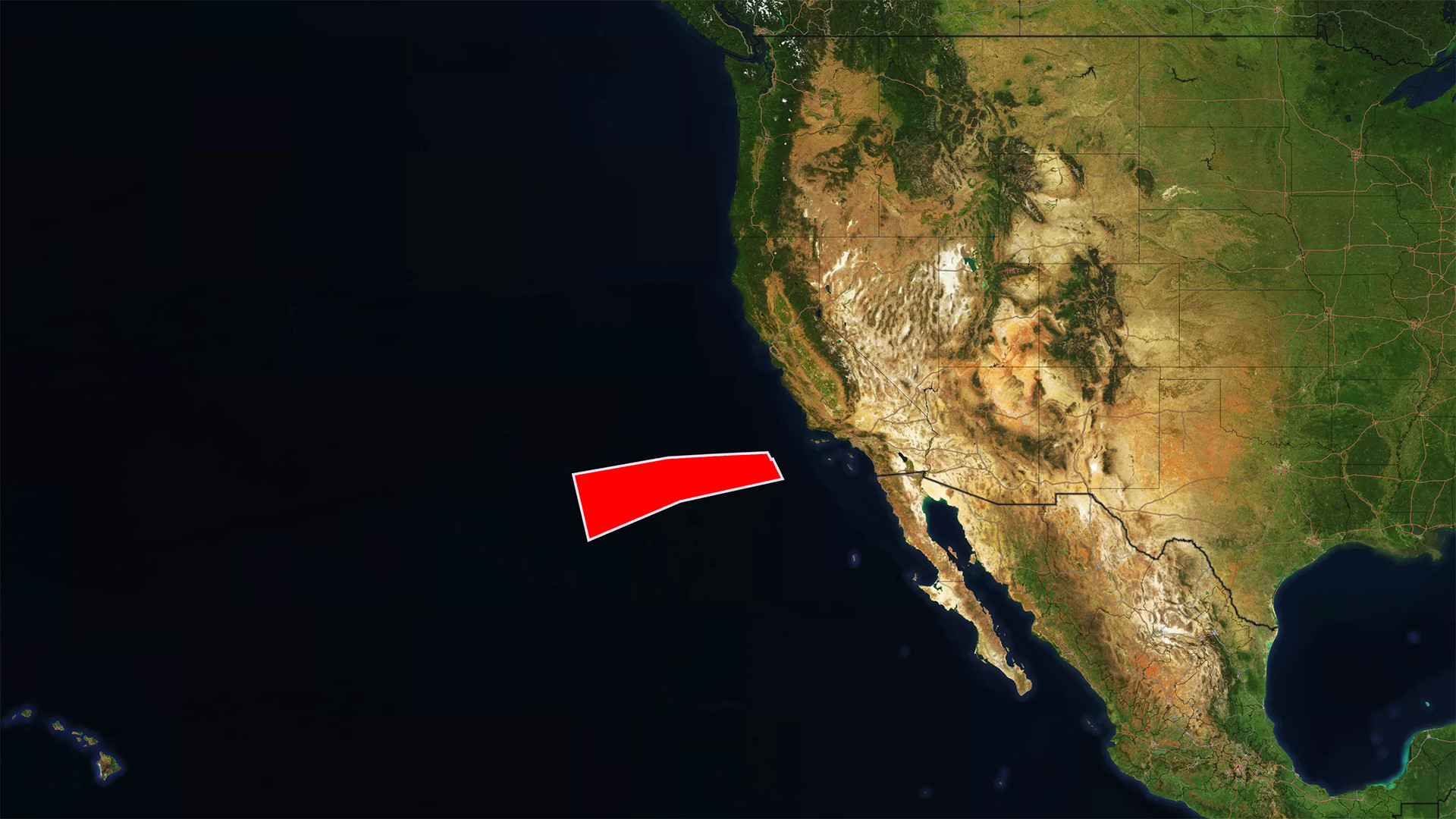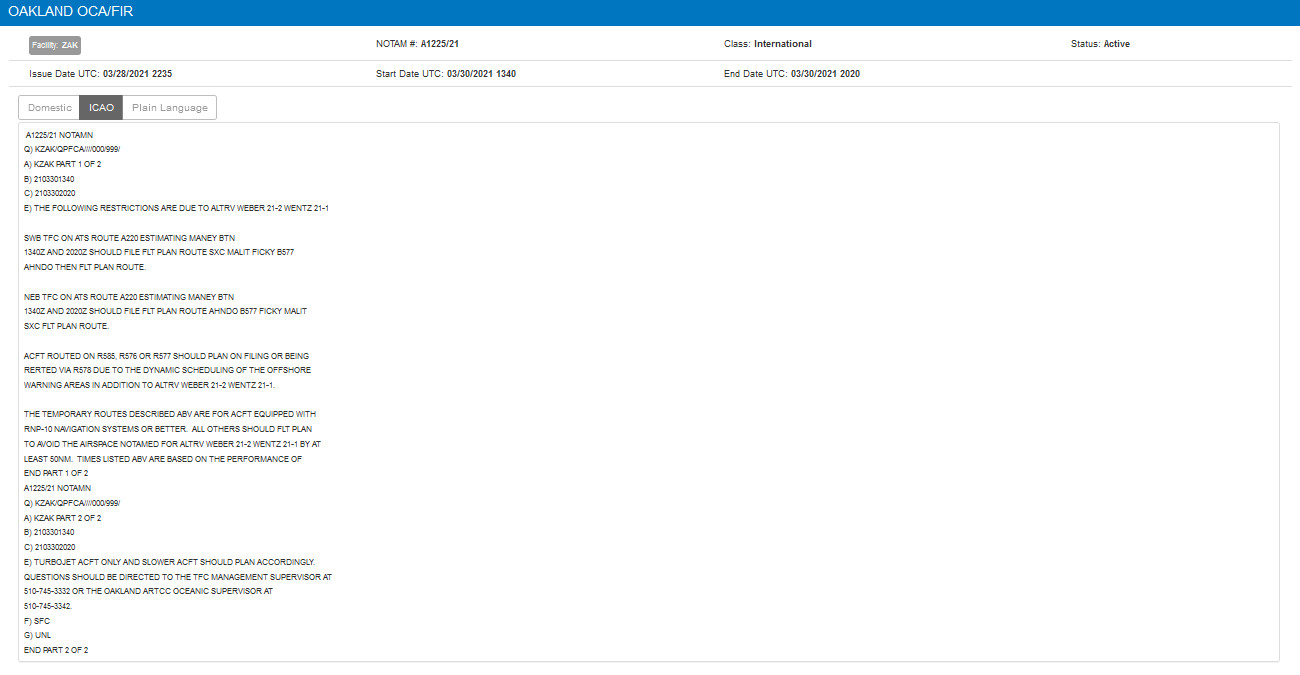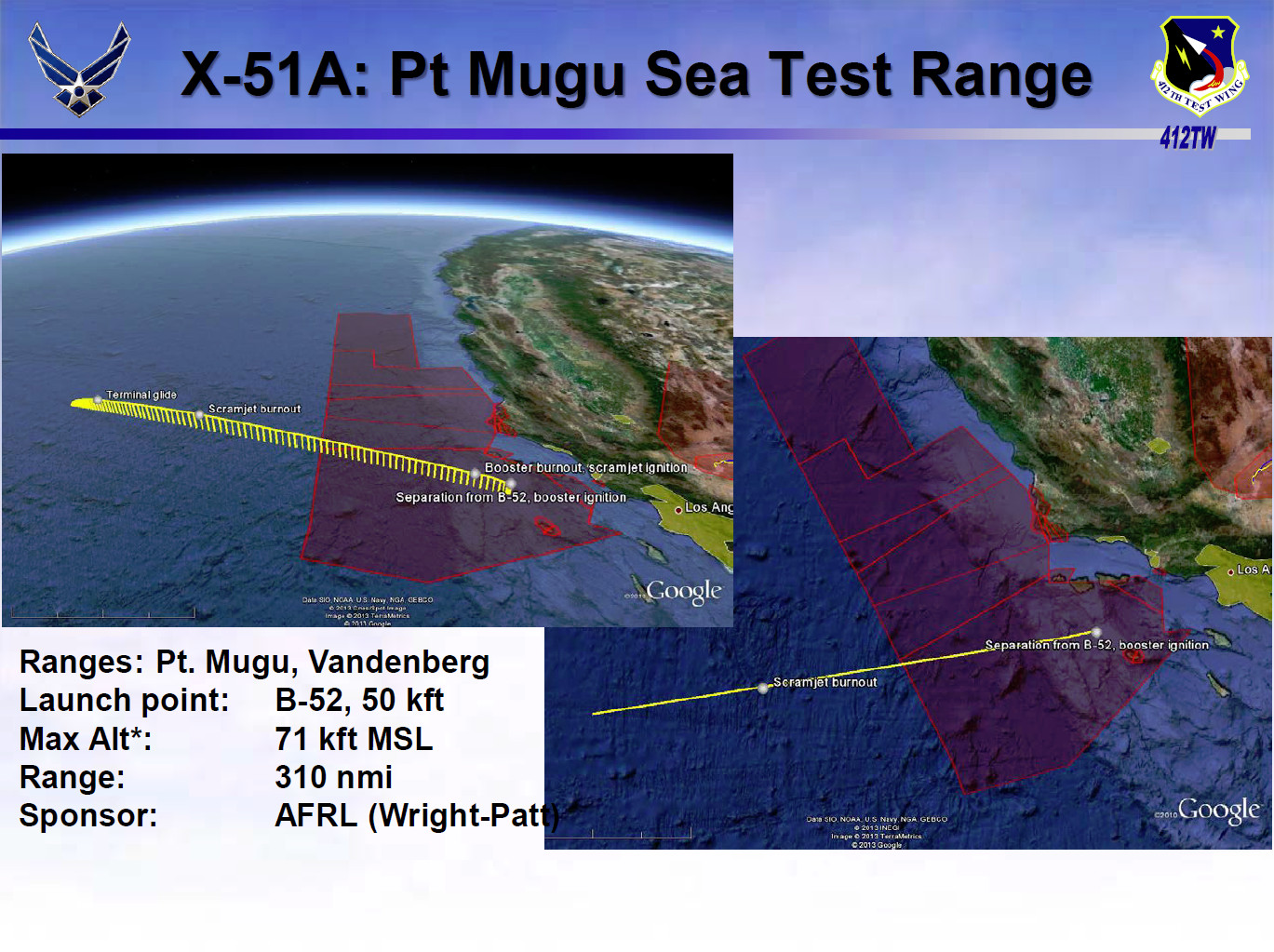Alerts from the Federal Aviation Administration strongly suggest that the U.S. Air Force’s first flight test of its AGM-183A Air-launched Rapid Response Weapon hypersonic missile, or ARRW, is imminent. The recent arrival of the U.S. Army’s missile range instrumentation ship USAV Worthy in San Diego and of one of NASA’s WB-57F aircraft, which can be configured to help gather data from missile tests, at Naval Air Station Point Mugu outside of Los Angeles, also point to an impending launch.

The Federal Aviation Administration (FAA) issued a pair of Notices to Airmen (NOTAM) on March 27, 2021, regarding airspace restrictions in the Pacific Ocean near the Point Mugu Sea Test Range, itself situated to the southwest of Los Angeles, that would be off-limits on March 30. Then, today, March 29, the FAA put out another two notices describing identical airspace restrictions, but which would be in place on April 1. The block of restricted airspace described in the NOTAMs is what one would expect to see during a missile test and the existence of the second set of notices would seem to indicate an alternate test window should poor weather or any other issues force a delay.



In addition, USAV Worthy had sailed into the Port of San Diego on March 24. NASA’s WB-57F with the U.S. civil registration code N927NA touched down at Point Mugu on March 26.
Worthy is a modified Stalwart class ocean surveillance ship, which was originally built for the U.S. Navy as the USNS Worthy and transferred to the Army in 1995. The ship’s various large white domes contain radars that can track the movement of fast-flying missiles and other air vehicles and gather important telemetry data to assess their performance.
NASA’s WB-57Fs have multiple payload spaces that can be relatively rapidly reconfigured to support various kinds of testing. The aircraft can notably be fitted with a nose-mounted turret containing electro-optical and infrared video cameras that can track and film missiles during launch.

All of this comes after the Air Force announced on March 5 that the first AGM-183A flight test would take place “in the next 30 days” over the Point Mugu range. The service had previously said this launch would occur by the end of the first week of March and, before that, by the end of December 2020. Unspecified technical issues, together with impacts from the ongoing COVID-19 pandemic, have been cited as reasons for these delays. There have multiple captive-carry flight tests in support of the ARRW program, in which instrumented test articles remained attached to B-52H bombers.
The U.S. military does conduct various testing in the waters off the coast of southern California. This includes missile and missile defense tests, such as routine launches of unarmed Minuteman III intercontinental ballistic missiles (ICBM) from a silo at Vandenberg Air Force Base, situated some 140 miles northwest of downtown Los Angeles.

However, those types of longer-range tests typically are preceded by NOTAMs covering multiple, distinct areas where other stages of the missiles, or other debris, are expected to fall back to earth, which is not the case in this instance. The Air Force has already said that the first planned ARRW launch, formally known as Booster Test Flight 1 (BTF-1), will not be a test of the complete weapon system. The official March 5 news release stated:
The ARRW BTF-1 will demonstrate the booster’s ability to reach operational speeds and collect other important data. In addition to booster performance, the test vehicle will also validate safe separation and controllability of the missile away from the carrier B-52H, through ignition and boost phase, all the way up to separation of a simulated glide vehicle. The simulated glider will not sustain flight, and will safely disintegrate soon after separation. The 412th Test Wing will conduct the ARRW BTF series over the Point Mugu Sea Range in California.
The Point Mugu range and adjacent areas of the Pacific have also been used for hypersonic flight testing in the past, including those of the Falcon Hypersonic Test Vehicle 2 (HTV-2) and the Boeing X-51A Waverider. The Defense Advanced Research Projects Agency (DARPA) and the Air Force worked together on the HTV-2 and X-51A programs. ARRW is an outgrowth of DARPA’s Tactical Boost Glide (TBG) effort.
The HTV-2 was an unpowered boost-glide vehicle similar in very broad respects to the one that the AGM-183A is designed to carry. Two tests of that design were carried out, one in 2010 and another in 2011, using ground-launched boosters fired from Vandenberg. The Worthy was also involved in those tests.

The X-51A, in contrast, was an air-breathing hypersonic test vehicle, but one that was also launched via a B-52H. Four test flights were carried out of the X-51A between 2010 and 2013.

With regards to the presence of the WB-57F at point Mugu, it’s also interesting to note out that NASA has been heavily involved in the Air Force’s Sky Range program, which has been working on developing new telemetry-gathering and other systems to support hypersonic testing that are set to be integrated onto modified RQ-4 Global Hawk and MQ-9 Reaper drones. At least one of NASA’s own Global Hawks is among those being converted into the new Range Hawk configuration, raising the possibility that its RQ-4 and MQ-9s will be at the core of the final Sky Range architecture. NASA Global Hawks have supported hypersonic testing in the past. However, there are no indications that any elements of the Sky Range system are in place for this apparent upcoming test, but it is a possibility that some of them could be used.

Sky Range is also just one element of substantial investments being made across the U.S. military, and elsewhere within the U.S. government, to support future hypersonic testing. ARRW is set to be the Air Force’s first operational air-launched hypersonic missile, but it is just one of many hypersonic weapons in development now across the services.
“We’ve got some amazing [test] infrastructure, but it’s very old,” Air Force Major General Christopher Azzano, head of the Air Force Test Center at Edwards Air Force Base in California, told Air Force Magazine for a piece it published last week. “We’ve put sustainment money into it over the last few years, but it needs more.”
Whether the forthcoming ARRW BTF-1 launch is successful or not, it will also be an important step forward for the service toward fielding hypersonic weapon capabilities it sees as critical for future conflicts, especially against near-peer opponents, such as China or Russia. “Hypersonics … will be the ‘break down the door’ weapon,” Mark Lewis, the Executive Director of the National Defense Industrial Association’s Emerging Technologies Institute, who left his post as the Pentagon’s Director of Defense Research and Engineering for Modernization in January, also told Air Force Magazine.
As it stands now, all the pieces seem to be aligning for the first ARRW flight test to take place, possibly as soon as the next 24 hours.
Contact the author: joe@thedrive.com
